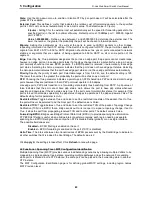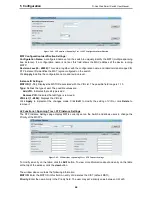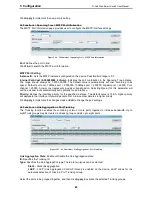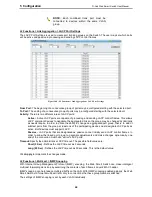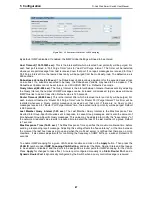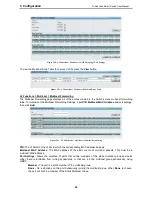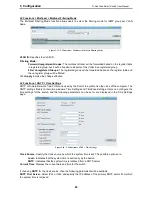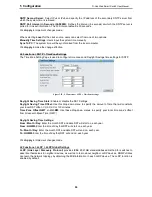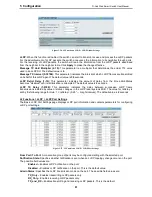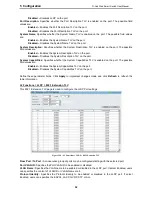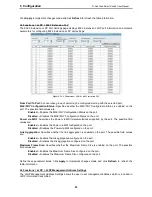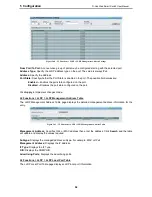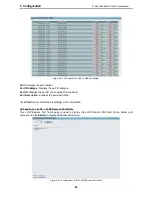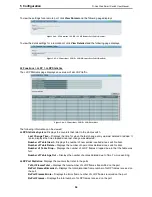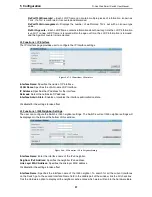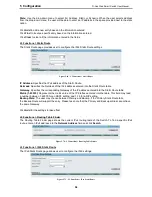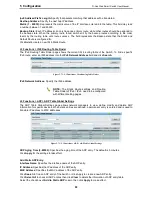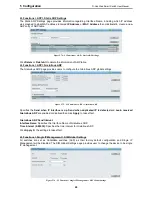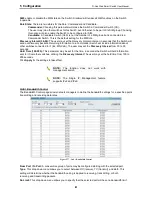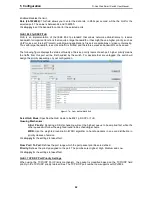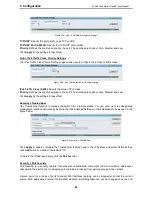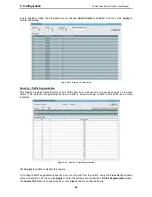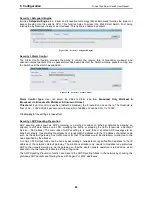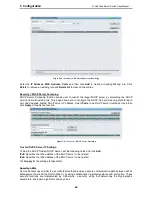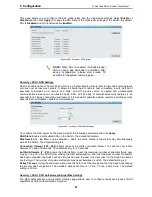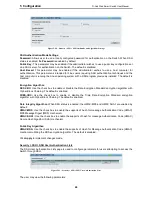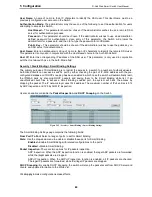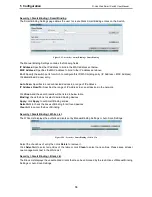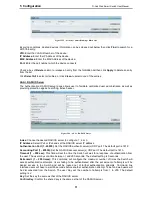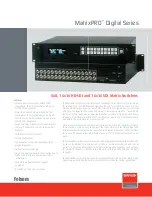
5 Configuration
D-Link Web Smart Switch User Manual
5
5
7
7
RxPortTLVsDiscarded – Each LLDP frame can contain multiple pieces of information, known as
TLVs. If a TLV is malformed, it is counted and discarded.
RxPortTLVsUnrecognized – Displays the number of well-formed TLVs, but with an known type
value.
RxPort Ageouts – Each LLDP frame contains information about how long time the LLDP information
is valid. If no new LLDP frame is received within the age out time, the LLDP information is removed,
and the Age-Out counter is incremented.
L3 Functions > IP Interface
The IP Interface page provides user to configure the IP Interface settings.
Figure 5.67 – L3 Functions > IP Interface
Interface Name: Specifies the name of IP interface.
VLAN Name: Specifies the VLAN name of IP interface.
IP Address: Specifies the IP address for the interface.
Netmask: Select the netmask of IP address.
Interface Admin State: Enables or disables the interface administration state.
Click Add for the settings to take effect.
L3 Functions > IPv6 Neighbor Settings
The user can configure the Switch’s IPv6 neighbor settings. The Switch’s current IPv6 neighbor settings will
be displayed in the table at the bottom of this window.
Figure 5.68 – L3 Functions > IP v6 Neighbor Settings
Interface Name: Enter the interface name of the IPv6 neighbor.
Neighbor IPv6 Address: Specifies the neighbor IPv6 address.
Link Layer MAC Address: Specifies the link layer MAC address.
Click Add for the settings to take effect.
Interface Name: Specifies the interface name of the IPv6 neighbor. To search for all the current interfaces
on the Switch, go to the second Interface Name field in the middle part of the window, tick the All check box.
Tick the Hardware option to display all the neighbor cache entries which were written into the hardware table.

